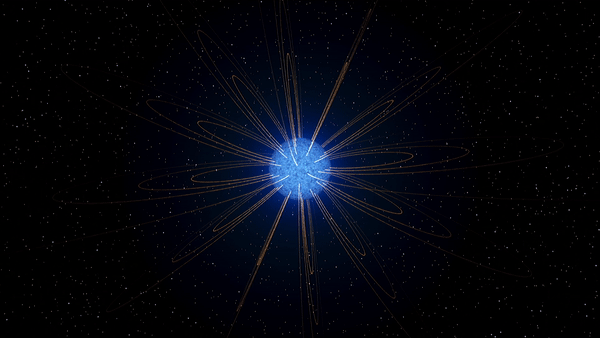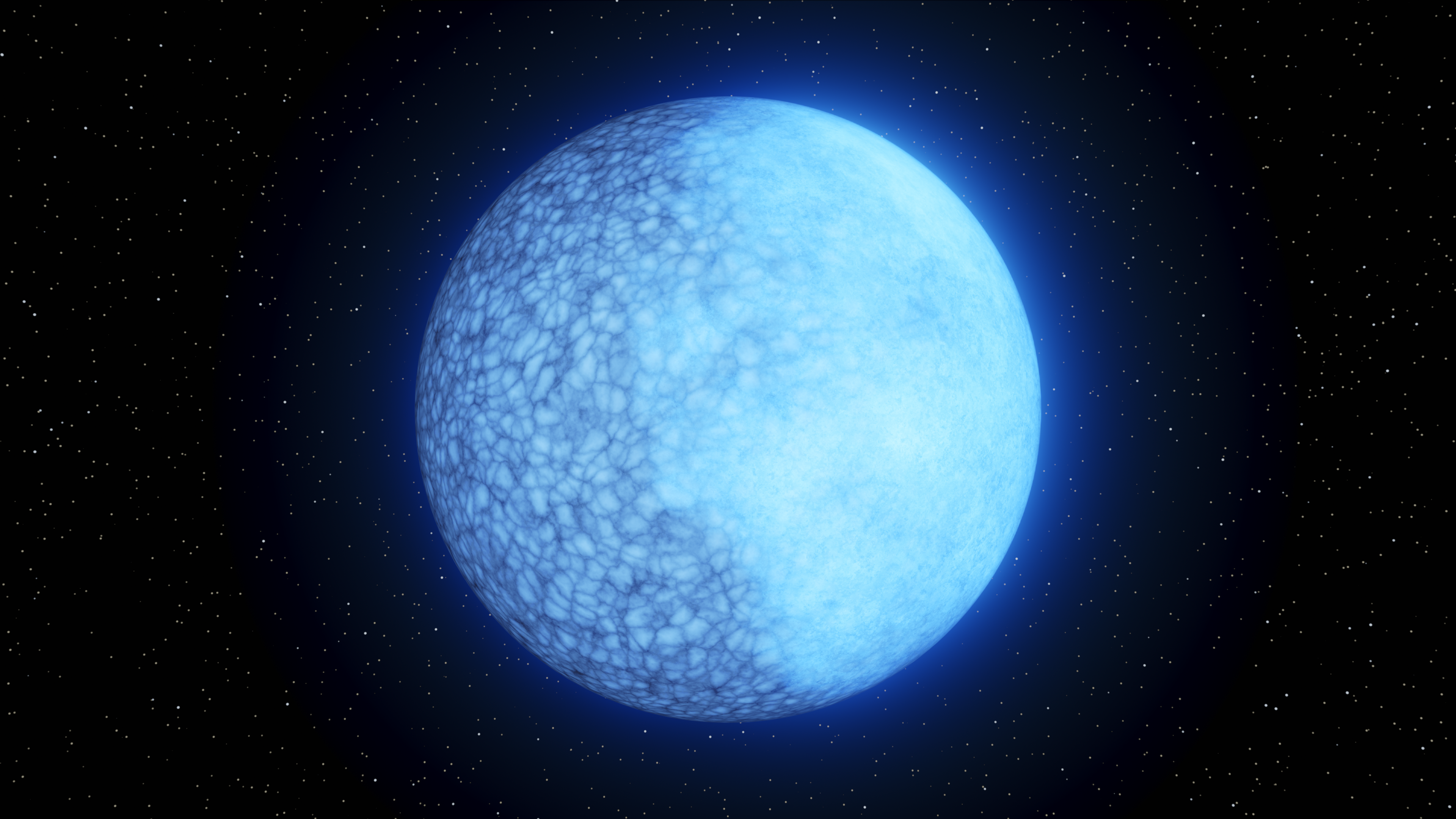
While routinely scanning the sky for the burnt-out remnants of dying stars, scientists stumbled upon a strange cosmic signal. After running a few more tests, they were stunned.
One of their observed stellar corpses, a white dwarf star more than 1,000 light-years from Earth that spins once every 15 minutes, had a peculiar appearance. Its orb-like surface possessed two different elements on either of its sides, weirdly divided like a basketball sliced down the middle. On one face, the researchers identified traces of hydrogen — on the other, helium. Though the split may not be exactly 50-50, the breakup the researchers saw was apparent enough to leave them scratching their heads.
"This was a completely serendipitous discovery," astrophysicist Ilaria Caiazzo, a postdoctoral scholar at the California Institute of Technology and member of the discovery team, told Space.com via email. "I was completely blown away by what I saw, and so is any astronomer to whom I show the data."
The researchers even nicknamed the strange object "Janus," after the two-faced Roman god of transition. Of course, Janus also has a more scientific name: ZTF J203349.8+322901.1. Scientists studied the star with a wide range of equipment ranging from spectrometers to powerful laboratories such as its namesake, the Zwicky Transient Facility in San Diego, California.
Related: White dwarfs: Facts about the dense stellar remnants
It is true that both hydrogen and helium are characteristic of white dwarf compositions because these objects are thought to go through a sort of evolutionary phase where their heavier elements, like helium, sink toward the bottom and their lighter elements, like hydrogen, float toward the top. Caizzo notes, however, that such a transitional phase had been heavily theorized in the past but wasn't physically proven yet.
Nevertheless, the researchers say their discovery marks the first time the two elements have been seen present on a white dwarf with such a stark separation.
"In my search with ZTF, I was looking for rapidly rotating and highly magnetized white dwarfs that might be the remnants of double-white dwarf mergers -- and I found many candidates," Caiazzo said. "However, when I looked at the spectrum of Janus I immediately understood that this was something different."
To help uncover Janus' unconventional story, Caiazzo and fellow researchers did come up with a couple of explanations. Both theories, in essence, have two important aspects.
First off, it's possible Janus was caught during that aforementioned convection phase, but during a time when the elements started to mix together — a process some white dwarfs may experience when they reach a certain temperature. Janus happens to be around that temperature. But second, and perhaps key in solving the mystery, is that Janus might have asymmetric magnetic fields.

Simply put, this means one side of the white dwarf may have stronger fields than the other side. And, magnetic fields are likely key in deciding how much helium or hydrogen a white dwarf has on its surface.
In the same vein, Caiazzo also suggests the fields could lead to lower gas pressures in Janus' atmosphere and therefore a hydrogen "ocean" in the area with stronger fields.
Going forward, the researchers hope they'll identify more stars like Janus with future ZTF surveys. With enough of these two-faced star corpse subjects, maybe a pattern will reveal itself.
"As we have indications that Janus could be the most striking example of a whole class of transitioning white dwarfs," Caiazzo said, "this discovery could help shed light on the physical mechanisms underpinning the spectral evolution of white dwarfs."
Even farther down the line, Janus could ultimately impact our understanding of atmospheric physics in general. "The fact that there is such a strong separation between the two elements over the surface," Caiazzo said, "as well as the fact that such structure has been stable for at least several years challenges our understanding of white dwarf atmospheres."
The research was published on July 19 in the journal Nature.







